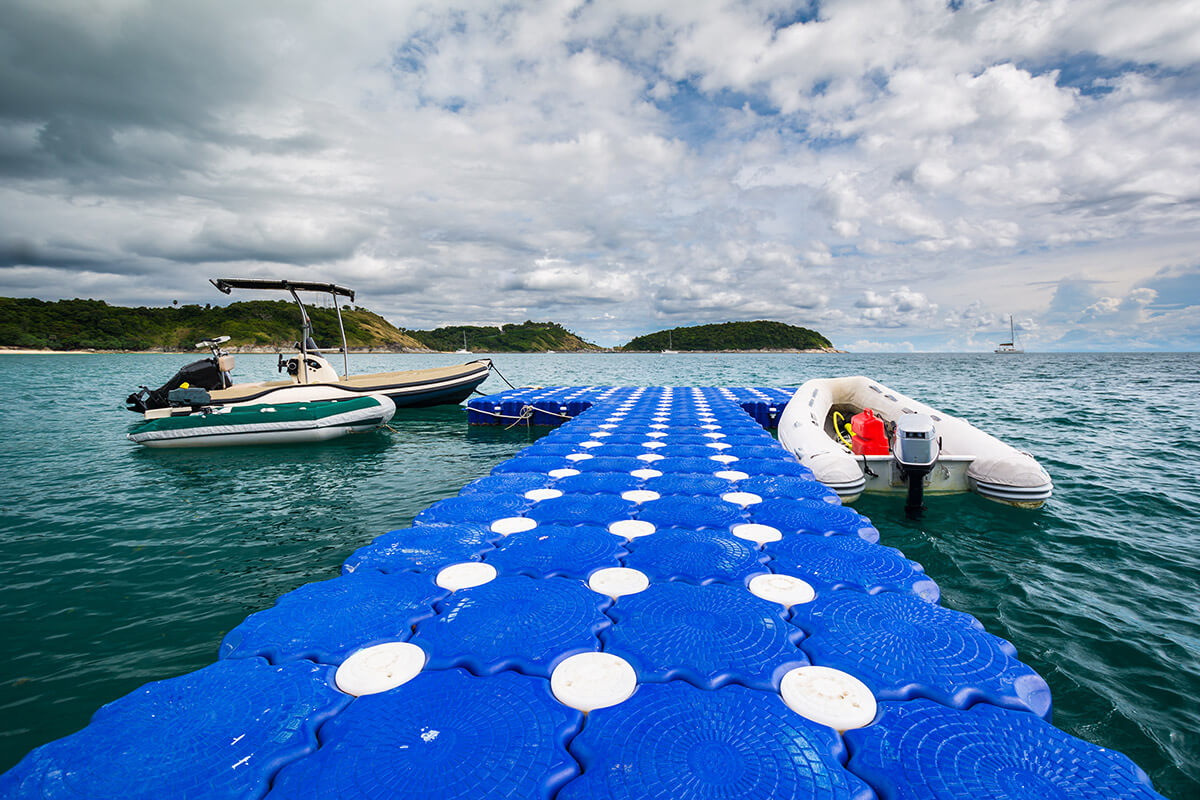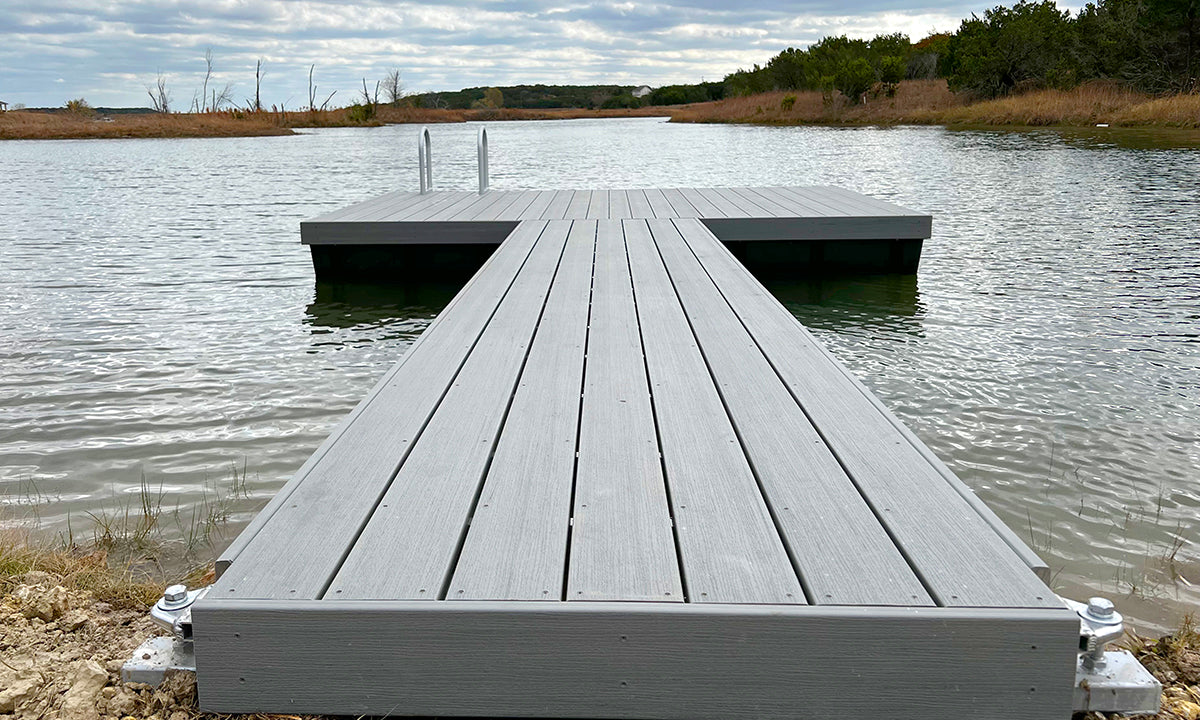Optimizing Your Outdoor Space with Specialized Floating Dock Services
Optimizing Your Outdoor Space with Specialized Floating Dock Services
Blog Article
Produce the Perfect Docking Option With Floating Docks
Floating docks present a functional service for a variety of maritime needs, adjusting effortlessly to fluctuating water levels and diverse vessel types. Their modular nature enables quick installment and moving, yet the choice of proper materials and style features is vital for making sure both capability and visual charm. As we check out the vital aspects that add to the performance of floating docks, several key variables pertaining to security and maintenance will certainly arise, questioning regarding how to maximize your docking experience. The succeeding discussion will brighten these crucial considerations.

Benefits of Floating Docks
Floating docks offer many benefits that make them an ideal option for numerous maritime applications. Among the primary advantages is their flexibility to altering water levels. Unlike taken care of docks, floating docks surge and loss with the trend, ensuring consistent accessibility for vessels. This feature is particularly important in locations prone to considerable tidal changes or seasonal water degree adjustments.
Additionally, floating docks are commonly simpler and quicker to install compared to typical fixed frameworks. Their modular layout enables simple assembly and disassembly, promoting upkeep and moving when needed. This versatility is especially beneficial for short-lived applications or in atmospheres where conditions might alter.
Floating docks also often tend to be much more environmentally friendly, as they minimize disturbance to the seabed and surrounding water environments. Their buoyant nature lowers the danger of damages to marine life, advertising a much healthier environment. Furthermore, these docks can be customized to suit numerous vessel dimensions, guaranteeing that they meet particular functional needs - floating dock company.
Ultimately, the combination of flexibility, convenience of installation, and environmental factors to consider makes floating docks a highly reliable solution for a large range of maritime requirements.
Choosing the Right Products
Picking the appropriate products for floating docks is critical to ensure durability, stability, and toughness. The choice of materials directly impacts the dock's performance in various environmental conditions, consisting of direct exposure to water, sunshine, and possible wear from aquatic web traffic.
Typical materials utilized for floating docks include light weight aluminum, wood, and high-density polyethylene (HDPE) Light weight aluminum is light-weight, corrosion-resistant, and needs very little maintenance, making it a superb selection for durability. However, its preliminary expense can be greater compared to other products.
Timber, while cosmetically appealing and providing a traditional appearance, can be at risk to rot and bug damage if not properly dealt with. Making use of pressure-treated wood or naturally sturdy types like cedar or redwood can mitigate these concerns.
HDPE is a prominent choice because of its resistance to UV rays and chemicals, along with being eco friendly. dock company. It is light-weight and available in numerous colors, enabling personalization
Ultimately, the ideal material selection will rely on particular needs, including spending plan, desired aesthetic appeals, and environmental considerations. Mindful assessment of these elements will certainly bring about a effective and resistant floating dock service.
Design Factors To Consider for Security
When making floating docks, guaranteeing stability is a fundamental aspect that can significantly impact their functionality and security. Security in floating dock layout is affected by different aspects, including buoyancy, weight distribution, and click over here now the arrangement of parts. An ideal buoyancy system need to utilize products that give sufficient lift while minimizing weight. This equilibrium guarantees that the dock remains above water, even under varying tons.
Weight distribution is crucial; evenly dispersing lots throughout the dock protects against turning and improves stability. Bigger layouts can use boosted stability, particularly in rough water conditions, while longer docks may require added assistances to avoid sagging.
An additional crucial consideration is the ecological effect, consisting of wave activity and wind. Incorporating attributes such as sidewalls or skirting can assist reduce the results of environmental pressures, preserving stability in damaging conditions. Ultimately, a mix of thoughtful style, material option, and understanding of environmental variables will generate a floating dock that fulfills both stability and security requirements.
Installment Tips and Strategies

Next, secure the necessary permits and stick to regional laws, which may dictate setup methods and environmental considerations. If called for, engage a certified service provider experienced in floating dock installations. Usage top notch materials developed for aquatic settings to boost toughness and long life.
When placing the dock, align it identical to the coastline to promote very easy access. Guarantee that the anchoring system is robust, utilizing concrete blocks or helical anchors to support the dock versus wind and wave action. It's crucial to account for seasonal water additional reading degree fluctuations, including potential ice activity in chillier environments.
During the installment, confirm the dock's floatation and stability prior to finalizing the anchoring. Routinely evaluate the installation for any kind of signs of wear or damages. By following these ideas and techniques, you can accomplish a safe and secure, functional, and visually pleasing floating dock installment that meets your demands.
Upkeep and Treatment Standards
Maintaining and caring for floating docks is crucial to lengthening their lifespan and making certain safe use. Regular inspections should be carried out to determine any type of indicators of wear, damages, or aquatic development. Look for cracks, loose fittings, or stained areas on the dock's surface, as these problems can jeopardize structural stability.
Cleaning up is necessary. Make use of a stress washing machine to eliminate algae, barnacles, and particles, which can collect gradually. For persistent growth, think about environmentally friendly cleaning representatives that will not hurt water life.
Furthermore, inspect the mooring lines and anchors frequently to guarantee they are cost-free and safe and secure from deterioration. Change any type of frayed or damaged lines promptly to preserve stability.
During severe weather condition, such as storms or freezing conditions, take preventive procedures. Protect the Full Report dock with additional mooring lines and, if viable, eliminate any type of detachable parts to stop damage.
Conclusion
Finally, the application of floating docks provides a flexible and efficient docking remedy appropriate for numerous maritime applications. Their flexibility to rising and fall water levels, combined with a modular design, permits very easy personalization and moving. Choosing appropriate products enhances both sturdiness and visual charm, while careful factor to consider of stability makes certain security and long life. With appropriate installment and regular upkeep, floating docks can provide trusted and efficient docking experiences for a vast array of vessels.
As we explore the vital components that contribute to the efficiency of floating docks, numerous key aspects pertaining to stability and maintenance will arise, raising inquiries concerning just how to maximize your docking experience. Unlike taken care of docks, floating docks surge and fall with the tide, making sure regular access for vessels.When designing floating docks, guaranteeing stability is an essential element that can dramatically influence their capability and safety. Stability in floating dock layout is influenced by different elements, including buoyancy, weight distribution, and the arrangement of components. Ultimately, a combination of thoughtful design, product option, and understanding of ecological variables will certainly produce a floating dock that meets both stability and safety needs.
Report this page